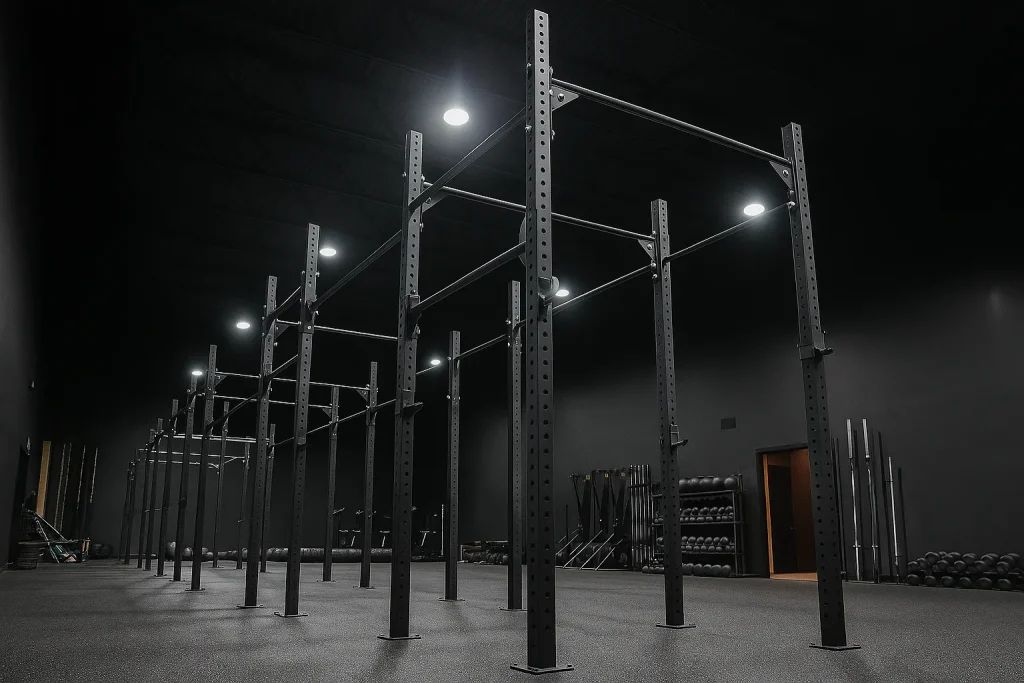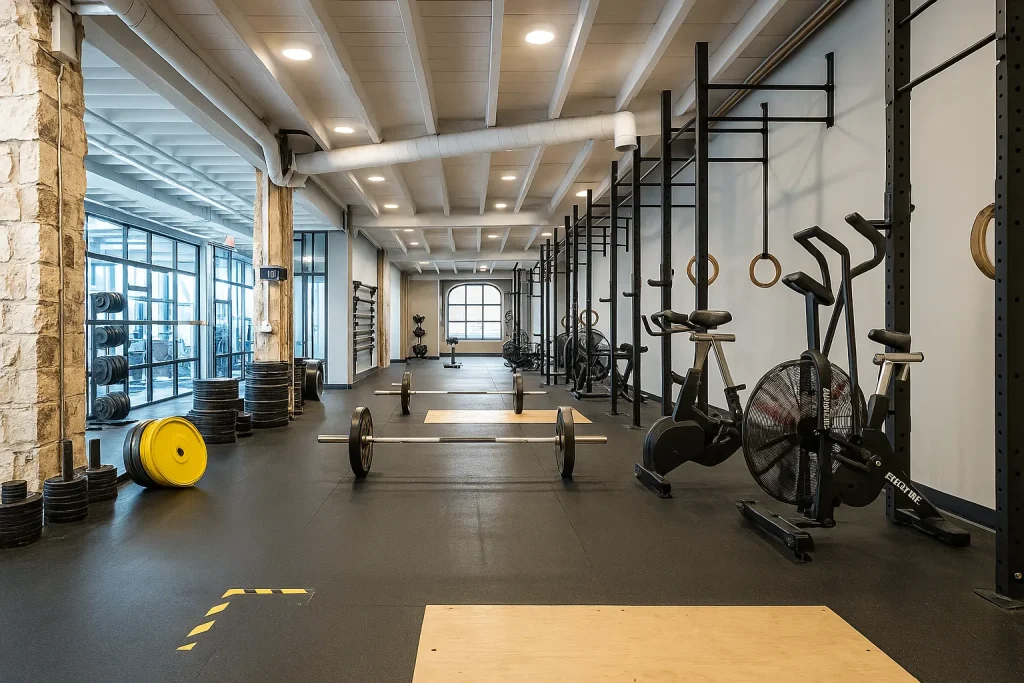CrossFit is awesome, right? All that energy, killer results, and a community that feels like family. If you’re a CrossFit fanatic, you’ve probably dreamt about opening your own “box” (that’s what we call a CrossFit gym). But hey, turning that dream into a real, successful business takes more than just being great at WODs. Trust me, I’ve seen tons of gyms come and go. Starting a CrossFit box is pretty unique – it’s about hardcore workouts, building a super tight community, and, yeah, running a smart business.
This guide will give you the inside scoop, step-by-step, with practical, real-world advice to help you cut through the tricky stuff and create a thriving CrossFit spot.

Phase 1: Planning & Prep
Before you even think about barbells and bumper plates, solid planning is super important. This first phase sets you up for success.
- Do Your Homework (Market Research) & Find Your Vibe (Niche):
- Look Around You: Who else is doing CrossFit in your area? What about regular gyms? What are they good at, and what’s missing?
- Know Your People: Who lives and works near where you want to open? Are they young professionals, families, or super competitive athletes?
- What’s Your Special Sauce? What’s gonna make your box stand out? Will you be the go-to for total beginners? Or for serious competitors? Maybe you’ll focus on a specific group, like parents or older folks? Your “thing” will shape everything, from how your coaches teach to how you advertise.
- Cook Up a Solid Business Plan:
- Figure Out the Money Stuff: Get real about how much cash you need to start (rent, equipment, building out the space, initial certifications). Then, think about your ongoing bills (more rent, utilities, coach salaries, those CrossFit affiliation fees, insurance, marketing). And, of course, how much you expect to make (membership fees, t-shirts, special classes).
- Where’s the Cash Coming From? How are you going to pay for all this? Loans, investors, crowdfunding, or maybe your own savings? A strong business plan is key if you’re trying to get money from others.
- Pick Your Company Type: Talk to a lawyer about whether you should be an LLC, an S-Corp, or something else. It matters for liability and taxes.
- Marketing Plan (Rough Draft): Jot down how you’ll get people excited before you even open, and how you’ll keep getting new members once you’re up and running.
Phase 2: Getting Legit – Licenses & Certs
CrossFit is a branded deal, so running under its name means playing by its rules. Plus, you’ve got all the regular business stuff to handle.
- Lock Down Your CrossFit Affiliation:
- Get Your CrossFit Level 1 (CF-L1): This is a must-have for the owner or head coach. It’s the basic training for understanding CrossFit and how to coach it safely.
- Affiliation Application & Fees: You’ll need to apply to CrossFit HQ and pay their yearly fees. Make sure your gym’s name doesn’t clash with any existing boxes. And yes, you gotta stick to CrossFit’s branding rules – no funny business!
- Handle Your Business Papers, Permits & Insurance:
- Register Your Biz: Get your business name and type registered with your local, state, and federal governments.
- Permits, Permits, Permits: You’ll need various permits, and these change a lot depending on where you are (like occupancy permits, general business licenses, health permits).
- Insurance is a Must: Seriously, don’t skip this. You’ll need general liability insurance for any potential injuries, property insurance for your place and gear, and maybe workers’ comp if you hire staff. Chat with an insurance pro who knows fitness businesses.
- Coach Certifications & Safety First:
- Go Beyond L1: While L1 gets your foot in the door, push all your coaches to get higher-level certs (L2, L3) and specialized ones (like CrossFit Kids, Weightlifting). The more knowledgeable your coaches, the better your box.
- First Aid & CPR/AED: Every coach needs to be certified in First Aid and CPR/AED. And make sure they refresh these regularly – it’s a lifesaver!
Phase 3: Your Space – Location & Setup
How your gym looks and feels, and how well it works, is a huge deal for safety and attracting members.
- Finding the Perfect Spot:
- Space Needs: CrossFit needs an open floor with high ceilings (at least 15 feet for rope climbs). You’ll also need decent bathrooms, changing rooms, a front desk/shop area, and maybe an office. Aim for at least 3,000-5,000 square feet for a good-sized box.
- Easy to Get To & See: Pick a place that’s easy for people to find, has good visibility, and plenty of parking. Being near homes, offices, or other cool businesses can be a big plus.
- Zoning & Noise: Double-check that you’re allowed to open a gym in that spot. CrossFit can be loud (dropping barbells!), so think about soundproofing or if the neighbors will mind the noise.
- Getting Your Gear:
- Must-Haves: Invest in good, tough commercial-grade equipment. Think CrossFit rig, barbells, bumper plates, pull-up rigs, GHDs, rowers, assault bikes, jump ropes, kettlebells, medicine balls, plyo boxes, and rings.
- Quality vs. Price: For core stuff, don’t cheap out. Safety and durability are key. Look up reputable CrossFit equipment brands (like Rogue Fitness, Fringe Sport, or Source Manufacturer of Commercial Fitness Equipment) known for solid gear and warranties.
- Buy in Stages: You don’t need everything on day one. Get the essentials first, then add more as your membership grows.
- Gym Layout & Look:
- Safety First: Make sure there’s enough space between workout stations to avoid accidents. Mark off clear zones.
- Smart Layout: Set up specific areas for WODs, open gym time, and warm-ups/cool-downs.
- Brand It: Use your gym’s colors, logo, and mission statement in the design to make it feel welcoming and inspiring. Good lighting is also super important.

Phase 4: Running the Show – Staff & Operations
Your coaches and how smoothly things run will totally define your box’s vibe and what members think of it.
- Hiring Awesome Coaches:
- More Than Just Certs: Yes, certs are great, but look for coaches who can really talk to people, have a positive attitude, truly love teaching, and can connect with everyone. They’re the face of your business!
- Fit Your Vibe: Make sure your coaches totally get and match the specific culture you want for your box. They should be more than just workout leaders; they’re mentors and community builders.
- Keep Things Running Smoothly (Management & Admin):
- Membership Software is Key: Get some solid software (like Wodify, Pike13, Mindbody) to handle signing up members, billing, class schedules, attendance, and talking to your community.
- Daily Routines: Set up clear rules for how things run every day – cleaning, equipment checks, and what to do in an emergency.
- Money Matters: Get your accounting in order, handle payroll correctly, and make sure you’re good with taxes.
- Smart Workout Planning (Programming):
- Good, Safe WODs: Design smart, varied workouts that challenge members but always put safety and correct form first.
- Scale for Everyone: Super important! Make sure every WOD can be adjusted up or down so everyone can do it, from total beginners to advanced athletes.
- Newbie Programs: Set up a “Foundations” or “On-Ramp” program to teach new members the basic moves and safety rules before they jump into regular classes.
Phase 5: Getting Members – Marketing & Growth
Once your box is ready to roll, it’s time to spread the word and build your tribe.
- Get the Hype Going (Pre-Opening Buzz):
- Social Media: Post cool stuff on Instagram and Facebook, showing off your space, your coaches, and what your new box is all about. Do countdowns and teasers.
- Local Action: Host pre-opening events, offer free trial classes, or team up with other local businesses. Get involved with the community early on.
- Founding Member Deals: Offer special discounts or perks for people who sign up early. This gets you a core group of members right away.
- Smart Membership Sales:
- Clear Prices: Offer different membership options (like unlimited classes, punch cards, or special class add-ons) to fit different budgets and commitment levels.
- Intro Offers: Give tempting trial periods or beginner packages to turn interested folks into paying members.
- Train Your Team: Make sure your staff knows how to give tours, explain what makes your gym special, and help people sign up.
- Keep ‘Em Coming Back (Retention):
- Community is HUGE: This is the heart of CrossFit. Organize social events, friendly competitions, challenges, and celebrate member milestones. A strong community means members stick around.
- Personal Touch: Encourage coaches to learn members’ names, give individual feedback, and cheer on their progress.
- Keep Things Fresh: Regularly ask for member feedback, tweak your workouts, and add new services or equipment to keep the experience exciting and valuable.
Conclusion
Opening a CrossFit gym is a big undertaking, but it’s super rewarding. It’s a journey that mixes your love for fitness with smart business moves, legal stuff, smooth operations, and endless community building. Yeah, there will be tough spots, but the chance to create a vibrant place where people truly change their lives, both physically and mentally, is massive.
Remember, success isn’t just about packed classes. It’s about building a loyal, engaged community that believes in what you’re doing. Approach this whole adventure with the same dedication and smart planning you’d bring to a crazy WOD, and you’ll be well on your way to building a successful and impactful CrossFit box.
